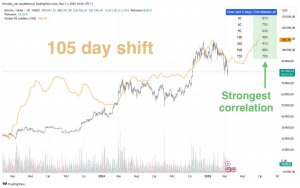Which Kind of Market Research Do You Need to Focus On?

Market research is one of the most crucial elements of creating a business, though it is often overlooked (Goldsby, 2014). Many entrepreneurs are so excited about their idea that they rush to get their product to market without fully understanding the key elements that make a business successful (Goldsby, 2014).
There are many approaches to marketing research, but most tend to align to a standard of three main components: who are the company’s customers, what is the industry like, and who are your competitors? (Goldsby, 2014; Edmonds, 2012; Dunford, 2012).
Edmonds (2012) lays out five focuses of market research that a company can use to gain a better understanding of their market. They are product research, customer research, pricing research, promotion research, and distribution research (Edmonds, 2012).
Product research explores the product that a company is selling and what similar products are on the market. It includes in-depth comparisons of product features, advantages, and benefits between all the similar products on the market.
Customer research helps to determine what potential customers would be and the population that would fall into a company’s market (Edmonds, 2012). It includes information on target niches, what makes customers loyal and what makes them change their buying habits.
Pricing research helps a company figure out what competitors are charging so the company can be competitive while also being profitable (Edmonds, 2012). It includes discovering information on what competitors use discounts and other pricing schemes such as loyalty bonuses.
Promotion research includes an exploration of what kind of promotions are current in the industry (Edmonds, 2012). It includes various channels such as social media, advertising, exhibitions, conferences, public relations, publicity, and sponsorships.
Finally, distribution research is aimed at discovering what distribution channels are being used in the industry (Edmonds, 2012). This branch of research distinguishes between direct and indirect channels.
Goldsby (2014) delineates two methods of gathering market research data: primary market research and secondary market research. Primary market research is research conducted by the individual or company itself and includes surveys, questionnaires, focus groups, and personal interviews (Goldsby, 2014). Secondary market research is research conducted by external firms such as marketing agencies, chambers of commerce, and trade associations (Goldsby, 2014). Government reports such as those from the Small Business Administration and Census Bureau are also a good source of secondary research (Goldsby, 2014).
References
Dunford, A. (2012). How to plan and execute great startup marketing programs – MaRS best practices. [Video]. MaRS Startup Toolkit. https://www.youtube.com/watch?v=FgwJbE1wIzk&feature=youtu.be
Edmonds, J. (2012). Video 024: How to do basic market research. [Video]. GetAheadInBusiness. https://www.youtube.com/watch?v=aHqoDAGHko4&feature=youtu.be
Goldsby, M. (2014). The entrepreneur’s toolkit. [Online course]. The Teaching Company.







